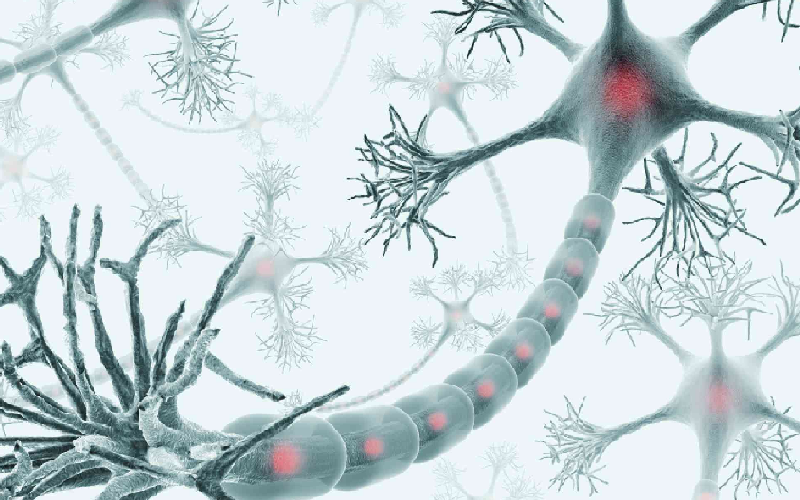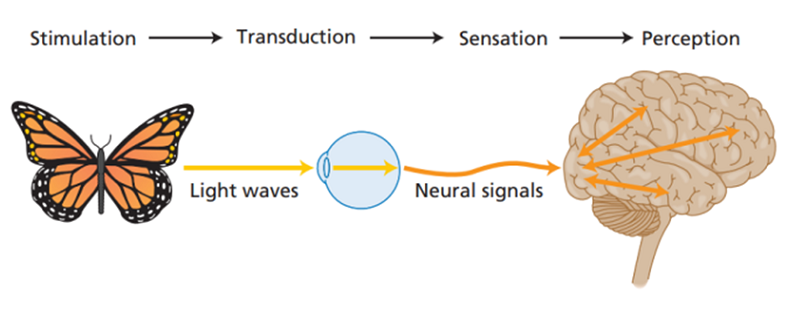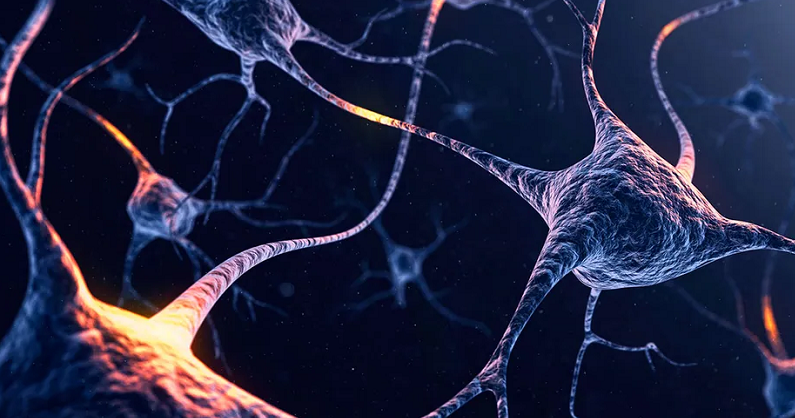
Have you ever wondered how you can instantly recognize the scent of freshly brewed coffee, feel the soft touch of a fleece blanket, or hear the subtle notes in your favorite song? Our senses are remarkable tools that provide us with a constant stream of information from the world around us, making everyday experiences rich and meaningful. But what lies at the heart of these intricate sensory systems? The answer is neurons.
Neurons are the fundamental building blocks of our nervous system, and they play an indispensable role in sensory perception. From the moment sensory receptors in our eyes, ears, skin, tongue, and nose capture stimuli, it is neurons that carry these signals to our brain for processing and interpretation. The ensuing perception — whether it’s the taste of chocolate, the sound of a violin, or the sight of a rainbow—emerges from the complex interplay of these neural activities.
Contents
Basic Anatomy and Function of Neurons
Knowing the basic anatomy of a neuron provides the foundation for understanding its diverse functions, including how it aids in the process of sensory perception.
Definition of a Neuron
A neuron, often referred to as a nerve cell, is a specialized cell that forms the basis of the nervous system. Unlike other cells in the body, neurons are specifically designed to transmit information. They communicate with each other, as well as with other cells like muscle cells, to facilitate a wide range of physiological functions, from triggering a muscle contraction to forming a memory.
Main Components of a Neuron
Now that we know what a neuron is, let’s dissect its anatomy to understand its essential components. Each neuron has three primary parts: the cell body, dendrites, and axon. Understanding these parts is like knowing the nuts and bolts of a machine; it helps us comprehend how neurons can perform their complex roles.
Cell Body (Soma)
The cell body, or soma, is the central part of the neuron. It contains the nucleus, which houses the cell’s genetic material, and other essential cellular organelles like mitochondria and endoplasmic reticulum. The cell body serves as the neuron’s “control center,” coordinating its activities and maintaining its health.
Dendrites
Branching out from the cell body are numerous extensions known as dendrites. These tree-like protrusions receive electrical or chemical signals from other neurons and send this information to the cell body. In essence, dendrites act as the “antennas” of the neuron, picking up signals from the external environment or from other neurons [1].
Axon
Opposite the dendrites, extending from the cell body, is a long, slender structure called the axon. The axon’s primary role is to transmit electrical signals away from the cell body toward other neurons or target cells, like muscles or glands. Some axons are covered with a fatty layer known as the myelin sheath, which speeds up the transmission of signals.
Types of Neurons
With a foundational understanding of a neuron’s anatomy, we can now explore the different types of neurons and their unique roles. There are mainly three types: sensory neurons, motor neurons, and interneurons.
Sensory Neurons
Sensory neurons are responsible for transmitting sensory information from our sensory organs (like the eyes, ears, and skin) to the central nervous system (brain and spinal cord). These neurons play a vital role in the topic of our blog post: sensory perception.
Motor Neurons
Motor neurons, on the other hand, carry signals from the central nervous system to the peripheral body tissues like muscles and glands. These neurons enable movements and actions, allowing us to interact with our environment effectively.
Interneurons
Interneurons are the “middle-men” that facilitate communication between sensory and motor neurons within the central nervous system. They play a critical role in interpreting sensory information and coordinating motor activities.
How Neurons Communicate: Synaptic Transmission
Last but not least, let’s discuss the fascinating process through which neurons communicate with each other: synaptic transmission.
At the end of each neuron’s axon are tiny structures known as synapses. A synapse allows one neuron to send signals to another neuron or target cell. This is done through the release of chemical messengers called neurotransmitters. These neurotransmitters cross a tiny gap between the neurons, known as the synaptic cleft, to bind to receptors on the receiving neuron’s dendrites. This binding event can either excite or inhibit the receiving neuron, influencing whether it will transmit a signal of its own.
This intricate process of synaptic transmission is at the heart of all neural activities, including sensory perception. Through this mechanism, neurons create complex neural networks that enable us to sense and perceive the world in astonishing detail.

Sensory Receptors and Their Role in Sensory Perception
Sensory receptors are the starting point of the sensory perception journey, acting as the frontline soldiers that first encounter the external stimuli.
Definition and Types of Sensory Receptors
Sensory receptors are specialized cells or cellular structures that detect changes in the environment and respond by generating electrical signals. These signals are then picked up by sensory neurons, initiating a cascade of neural events that result in perception. To understand the diversity of our sensory experiences, it’s important to know that there are several types of sensory receptors, each tuned to specific kinds of stimuli.
Photoreceptors (Vision)
Photoreceptors are found in the retina of the eye and are sensitive to light. They come in two primary types: rods, which are responsible for vision in low light conditions, and cones, which enable us to see color. When light hits these receptors, they generate electrical signals that are sent to the brain via the optic nerve, allowing us to perceive visual information [2].
Mechanoreceptors (Touch)
Located in the skin, as well as some internal organs, mechanoreceptors respond to mechanical stimuli like pressure, vibration, and stretch. Different types of mechanoreceptors are specialized for detecting various aspects of touch, such as texture or pressure, and send this information to the brain for interpretation.
Chemoreceptors (Taste and Smell)
Chemoreceptors detect chemical substances dissolved in fluids or in the air. In the context of taste, these receptors are found on the taste buds of the tongue and can detect basic tastes like sweet, salty, sour, bitter, and umami. For smell, chemoreceptors are located in the olfactory epithelium in the nasal cavity. They respond to various odor molecules and contribute to our sense of smell.
Nociceptors (Pain)
Nociceptors are specialized sensory receptors that respond to damaging or potentially damaging stimuli, generating a sensation of pain. They are found throughout the body, including the skin, joints, and some internal organs. Nociceptors play a crucial role in alerting the body to harmful conditions.
Thermoreceptors (Temperature)
Thermoreceptors are sensitive to changes in temperature and are found in the skin, as well as some internal organs. They help us distinguish between hot and cold and play a significant role in helping us regulate our body temperature.
How Sensory Receptors Interface With Neurons
Now that we’re acquainted with the various types of sensory receptors, let’s explore how these receptors interface with neurons to initiate the sensory perception process.
When a sensory receptor detects a stimulus—be it light, pressure, or a chemical molecule—it generates an electrical signal known as a receptor potential. This electrical activity then triggers the release of neurotransmitters at the junction between the sensory receptor and a sensory neuron, known as a sensory synapse. From here, the neurotransmitters bind to the sensory neuron, inducing it to generate its electrical signal, known as an action potential. This action potential then travels along the neuron’s axon towards the central nervous system for further processing, ultimately leading to conscious perception [3].

The Journey of Sensory Information: From Stimulus to Perception
Now that we’ve examined the vital roles played by sensory receptors and neurons, let’s take a closer look at the fascinating journey sensory information takes from the moment a stimulus is detected to the point where we become consciously aware of it. This intricate pathway involves multiple steps, each crucial for the faithful translation of external stimuli into our rich tapestry of sensory experiences.
The Role of Sensory Neurons in Relaying Information
The first “messenger” in this intricate journey is the sensory neuron. As we’ve learned, sensory neurons pick up signals from sensory receptors and transmit them toward the central nervous system. These neurons serve as the initial translators, converting the language of sensory receptors into electrical signals that the brain and spinal cord can understand. In essence, sensory neurons are the bridges that connect our external world to our internal neural landscape.
The Pathway: Sensory Organs to the Central Nervous System
Understanding the sensory experience requires exploring the biological pathways that sensory information travels. From the peripheral areas of the body where stimuli are first detected, signals travel through a well-orchestrated network to reach the brain for interpretation.
Peripheral Nervous System
The peripheral nervous system (PNS) consists of all the nerves lying outside the central nervous system. Sensory neurons in the PNS are the first to receive signals from sensory receptors. These neurons then relay the signals to the spinal cord, which acts as a sort of “information highway,” channeling sensory data toward the brain [4].
Spinal Cord and Brainstem
Once sensory information enters the spinal cord, it may either be processed locally for quick reflex actions or continue its journey upwards toward the brain. For example, if you touch a hot stove, a rapid reflex action initiated in the spinal cord will cause you to quickly withdraw your hand even before you consciously feel the pain. For more complex sensory experiences, the signal moves up to the brainstem, which serves as a relay station for further processing.
Thalamus and Primary Sensory Areas in the Brain
Upon reaching the brain, most sensory signals first arrive at the thalamus, a structure deep within the brain that acts as a “switchboard,” directing signals to appropriate areas for further processing. From the thalamus, sensory information is dispatched to the primary sensory areas in the cerebral cortex specific to each sense—like the visual cortex for sight or the auditory cortex for hearing.
Interpretation of Sensory Information
The sensory journey doesn’t end with the arrival of signals at the primary sensory areas. Here, the brain decodes these signals into sensations we can consciously recognize. For instance, neurons in the visual cortex help us perceive shapes, colors, and motion, while neurons in the auditory cortex allow us to interpret different sounds as speech, music, or noise. This phase of interpretation involves complex neural computations, including the integration of past experiences and contextual information.
The Multisensory Experience: Integration Across Senses
In our daily lives, our sensory experiences are usually not isolated to just one sense. Rather, they are often a blend of multiple sensory inputs. This multisensory integration occurs in various regions of the brain, allowing us to have a more holistic perception of our environment. For example, the sound of footsteps can alert us to turn our head, enhancing our visual perception of someone approaching.
Neural Plasticity and Sensory Perception
One of the most awe-inspiring aspects of the nervous system is its adaptability, often referred to as neural plasticity. This remarkable feature allows neurons to form new connections, strengthen existing ones, or even reroute information pathways. Such plasticity plays a significant role in sensory perception, especially when it comes to learning, memory, and adapting to new experiences or injuries.
What is Neural Plasticity?
Neural plasticity refers to the ability of the neural system to change its structure and function in response to external or internal factors. This adaptability allows us to learn new skills, form memories, and even recover from injuries. It’s a dynamic process, occurring throughout our lives, and is vital for our cognitive and sensory functions.
Types of Neural Plasticity
Neural plasticity can manifest in various ways, affecting different aspects of sensory perception. Understanding these types can give us deeper insights into how our sensory experiences can change over time or under different circumstances.
Structural Plasticity
Structural plasticity involves physical changes in the brain, such as the formation of new neurons (neurogenesis) or the alteration in the number and structure of dendrites and synapses. These changes often occur during learning or after injuries and can significantly impact how we perceive sensory information [5].
Functional Plasticity
Functional plasticity refers to changes in the operational aspects of neurons, like how they communicate with each other. For instance, the efficiency of synaptic connections may improve with repeated use, a phenomenon known as long-term potentiation. This form of plasticity is crucial for memory formation and adapting to new sensory experiences.
Adaptive Plasticity
Adaptive plasticity comes into play when the neural system needs to compensate for lost function due to injury or environmental changes. For example, if a person loses their sense of sight, other senses like hearing or touch may become more acute to compensate for the loss.
Impact of Plasticity on Sensory Perception
Now that we’re familiar with the types of neural plasticity, let’s explore how these changes directly impact our sensory perception.
Learning and Memory
The ability to learn and remember relies heavily on neural plasticity. For example, a musician might develop enhanced auditory perception due to extensive training, fundamentally altering the way they experience sound.
Aging
As we age, our sensory perceptions often decline. However, neural plasticity can help mitigate some of these effects by forming new pathways to compensate for deteriorating ones.
Recovery After Injury
After a sensory injury, such as nerve damage, neural plasticity allows the nervous system to reorganize itself to regain lost functions or develop new ways of performing tasks.
Environmental Adaptation
When we are exposed to new environments or experiences, neural plasticity enables our sensory system to adapt and optimize our interactions with the world around us.
Limitations and Future Research
While neural plasticity offers numerous benefits for sensory perception, it also has its limitations. For example, there are critical periods in early life where the nervous system is more susceptible to change, but this plasticity diminishes with age. Understanding these limitations is a focus of ongoing research, as scientists seek ways to harness neural plasticity for therapeutic interventions, such as in cases of sensory deficits or neural injuries.
References
[1] Sensory Neuron
[2] The Sensory Neurons of Touch
[3] Sensory Perception · Anatomy and Physiology
[4] Functional Anatomy of the Sensory Nervous System
[5] Sensory Processes

